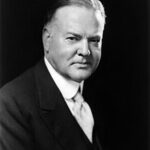The Decision
President Herbert Hoover signed the Emergency Relief and Construction Act on January 22, 1932. This legislation created the Reconstruction Finance Corporation with $500 million in capital. The RFC represented Hoover’s most significant departure from traditional laissez-faire economics. 📊 The agency received authorization to provide emergency loans totaling $2 billion to struggling financial institutions.
Innovative Federal Intervention
The Reconstruction Finance Corporation marked a revolutionary approach to economic crisis management. Unlike previous administrations, Hoover embraced direct federal intervention in private markets. The RFC targeted banks, railroads, building and loan associations, and insurance companies. This strategic focus aimed to prevent cascading institutional failures that threatened economic stability. 💰 The program provided crucial liquidity when private credit markets had virtually collapsed.
Bipartisan Legislative Support
Congress passed the RFC legislation with overwhelming bipartisan support. Democratic leaders praised Hoover’s willingness to abandon rigid ideological positions. The program represented pragmatic governance during unprecedented economic turmoil. ⚠️ Critics initially worried about government overreach, but the crisis demanded bold action.
Impact:
Immediate Economic Stabilization
The Reconstruction Finance Corporation achieved remarkable success in its primary mission. Within six months, the RFC had disbursed over $1 billion in emergency loans. 📊 Bank failures dropped from 2,294 in 1931 to 1,456 in 1932. The agency prevented complete collapse of the national banking system. Railroad companies received vital funding that maintained transportation networks. Insurance companies stabilized, protecting millions of policyholders from devastating losses.
Long-term Policy Precedent
The RFC established crucial precedents for federal economic intervention that influenced future policy. Franklin Roosevelt expanded the program significantly after 1933. 🌍 The corporation continued operations until 1957, spanning multiple administrations. Modern economic stabilization programs trace their origins to Hoover’s innovative approach. The Federal Deposit Insurance Corporation and other New Deal agencies built upon RFC foundations.
Historical Recognition
Historians increasingly recognize the Reconstruction Finance Corporation as Hoover’s most successful initiative. The program demonstrated effective crisis management despite partisan criticism. 💰 Economic historians credit the RFC with preventing complete financial system collapse. The corporation’s success influenced international approaches to economic crisis intervention. Modern central banking practices incorporate lessons learned from RFC operations during the Great Depression era.
